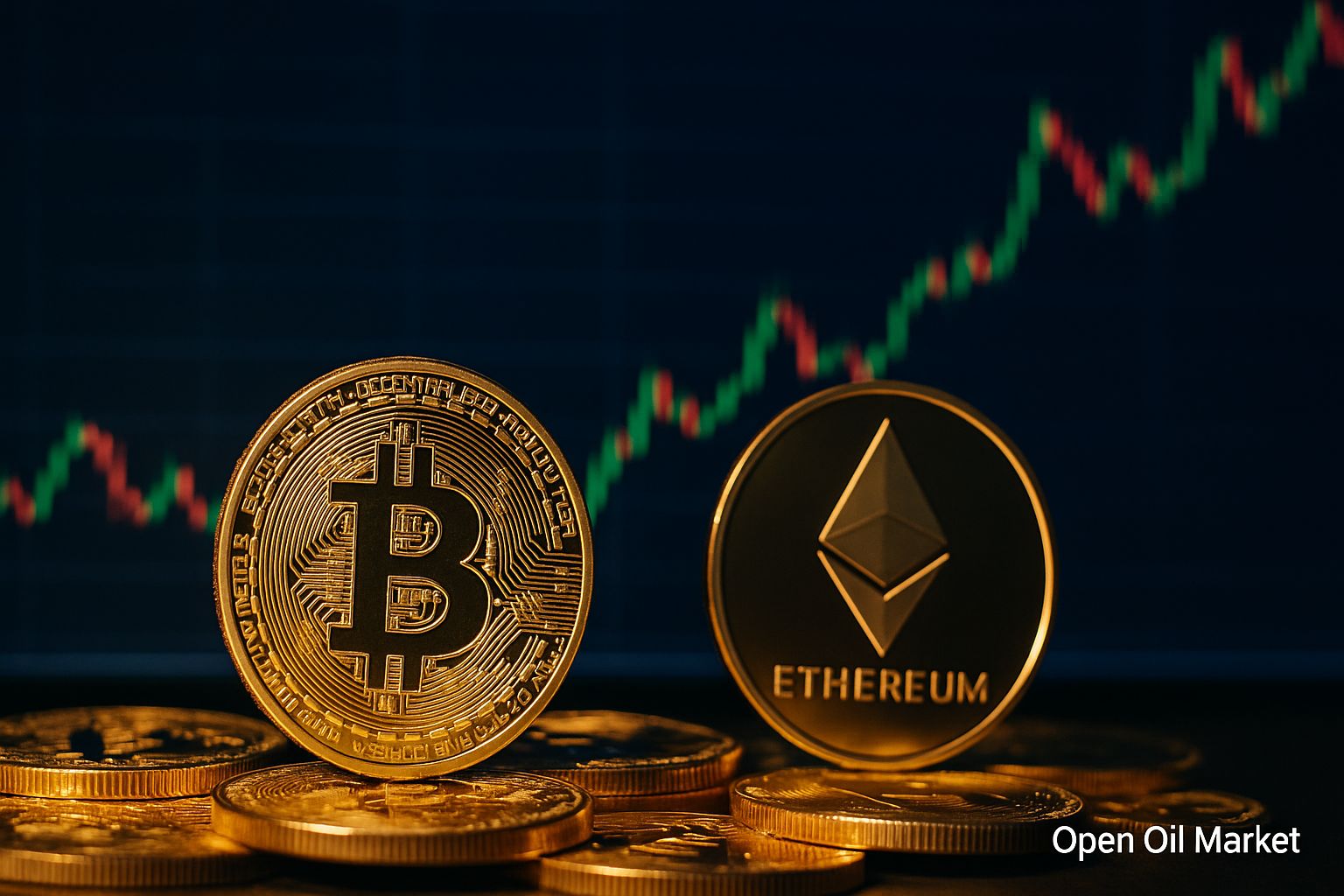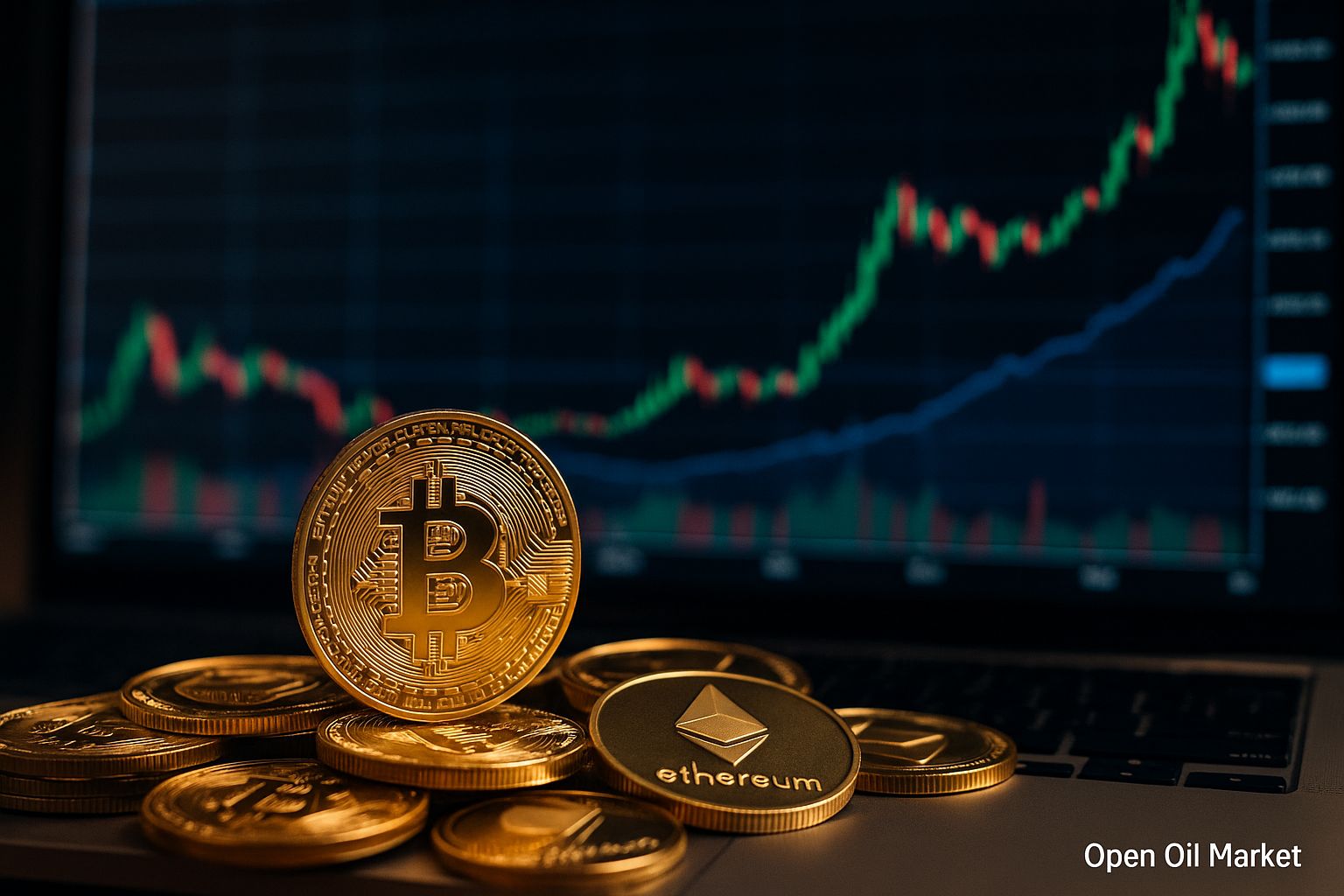
Current Cryptocurrency News for Sunday, September 21, 2025 - Bitcoin at Record Levels, Altcoins Surge Amid Declining Fed Rates and Optimism Surrounding Crypto ETFs
As of the morning of September 21, 2025, the cryptocurrency market remains near its historical highs following a series of significant events over the past week. Bitcoin's price is consolidating around ~$117,000 (just a few percent below its record peak of ~$124,000 reached in August), while Ethereum (ETH) is trading close to its multi-year maximum (around $4,700 after exceeding its previous all-time high of ~$4,900 a month earlier). The total market capitalisation of cryptocurrencies exceeds $4.2 trillion, reflecting consistently high interest in digital assets from both retail and institutional investors. Major altcoins are also witnessing growth: several coins in the top 10 have approached their recent highs. Market optimism is bolstered by favourable macroeconomic signals (including actual monetary policy easing in the US) and an improved regulatory environment, stimulating further capital inflows into cryptocurrencies.
Market Overview: Momentum Following Fed Rate Cut
In mid-September, the US Federal Reserve lowered its key interest rate by 0.25% for the first time in a long time, meeting market expectations for a shift to a more dovish monetary policy. This decision provided a new boost to the cryptocurrency market: on the day of the announcement, Bitcoin briefly jumped above $117,000, and major US stock indices also marked gains. Even before the Fed’s decision, the digital asset market had been confidently rising at the start of the month, fuelled by a series of positive news and a softened stance from US regulators. Now that the Fed has effectively shifted to rate cuts, bullish sentiment has intensified—cheaper capital and improved liquidity traditionally favour risky assets, including cryptocurrencies. Simultaneously, Bitcoin’s share of total market capitalisation has decreased to ~53%, indicating an active reallocation of funds into altcoins and the emergence of a full-fledged "altcoin season" in the market.
Bitcoin: Consolidation Ahead of a New Surge
Flagship Bitcoin (BTC) set a new price record in August, rising above $124,000. In recent weeks, following a rapid rally, the largest cryptocurrency has entered a phase of healthy consolidation, trading in the range of $115,000–118,000. The current price is about 5-7% lower than its peak values, which is a natural correction: some investors have taken profits at the highs. However, the overall market sentiment remains positive. Even considering the recent pullback, BTC's current price is nearly double what it was at the beginning of the year, and its market capitalisation stands at around $2.3 trillion (approximately 55% of the total cryptocurrency market capitalisation). By this metric, Bitcoin firmly ranks among the top five largest financial assets in the world, trailing only giants like Google and Amazon.
Experts note that the current pause in growth is a necessary 'breather' before a potential new upward trend. The factors that sparked BTC's rally remain intact: investors welcome the onset of US monetary policy easing, institutional players continue to increase their investments through exchange-traded funds, and regulators are increasingly sending positive signals to the crypto industry. Nevertheless, macroeconomic risks persist: unexpected inflation spikes or overly hawkish comments from Fed officials could temporarily cool the market. For instance, last week, a tough comment from a Fed official briefly pushed BTC's price below $113,000, but buyer demand quickly restored the quotes. Overall, Bitcoin displays high resilience: long-term holders are not rushing to sell, viewing BTC as 'digital gold'. Major corporations and funds continue to accumulate the asset—well-known companies collectively added thousands of BTC to their balance sheets during the recent decline. Such capital inflows from 'big players' support the market and reinforce confidence that the bullish trend is far from over.
Ethereum: Proximity to Record Levels and Institutional Demand
The second-largest cryptocurrency by market capitalisation, Ethereum (ETH), is on an upward trend and remains near multi-year highs. Ether consistently trades close to $4,700, just shy of its all-time high (~$4,900, reached at the end of August). Attempts by some investors to partially take profits during the rise only temporarily held back a sharper price surge, but overall sentiment surrounding Ethereum remains optimistic. This is largely due to increasing interest from institutional and corporate investors in this platform.
Recently, record inflows into Ethereum-based funds were observed: following the launch of the first spot ETFs on Ethereum in the US, investments in these products topped $3 billion in August alone, highlighting the heightened attention from large capital to ETH. Major banks and investment houses have also improved their forecasts for Ether: for instance, some analysts on Wall Street now expect ETH's price to rise to $7,000–8,000 in the coming quarters. The attractiveness of Ethereum for investors is explained by a combination of price growth potential and staking yields: ETH holders receive 3-5% annual returns by participating in transaction validation on the network. Ether is increasingly viewed as a kind of 'digital oil' of the modern crypto economy – a key resource needed for the operation of numerous decentralised applications, DeFi protocols, and NFT platforms.
Aside from price dynamics, Ethereum shows strengthening fundamental network indicators. A significant portion of coins is staked or held long-term, reducing supply in the market and creating scarcity that supports price. The Ethereum network continues to evolve: regular technological updates aim to enhance scalability and efficiency (including further sharding development and protocol optimisation). Activity is also on the rise—around 2 million transactions are processed daily on the ETH network, reflecting the vigorous development of the application ecosystem. All these factors—institutional inflows, reduced available supply, and ongoing technical development—provide a solid foundation for maintaining Ethereum's leading market position.
Regulation and Institutional Trends
In the US, a series of measures have been adopted that are forming a more favourable environment for the crypto industry. Oversight rules for stablecoins have been simplified, and legislative reforms are underway to clearly define the legal status of digital assets. One of the key steps has been the official approval to include cryptocurrencies in retirement savings (401(k) accounts), granting millions of Americans access to new investment tools. Furthermore, American regulators are showing greater leniency towards crypto-based exchange products: the first SEC-approved spot ETFs linked to Bitcoin and Ethereum have already came to market. Following these leading assets, regulators are considering applications for the launch of funds based on other cryptocurrencies (including XRP, Solana, and Cardano), indicating a growing interest from large capital in the sector.
In Europe, this year saw the implementation of the MiCA framework, establishing uniform requirements for the circulation of crypto assets across all EU countries. Such global initiatives from authorities reduce legal risks for investors and attract new institutional players into the industry. Notably, even central banks are beginning to explore the integration of digital assets: in a recent report, the US Fed outlined possible approaches to re-evaluating gold reserves to support future financial initiatives, including the establishment of a national Bitcoin reserve. This signifies a growing recognition of cryptocurrencies as a strategically important asset class at the highest levels.
Top 10 Most Popular Cryptocurrencies
- Bitcoin (BTC) – The first and largest cryptocurrency (around 55% of the market by capitalisation). BTC trades around $117,000, serving as 'digital gold' and the basis for most investment crypto portfolios.
- Ethereum (ETH) – The second largest token by capitalisation and the leading smart contract platform. The price of ETH is around ~$4,700 (close to the all-time high); Ether underpins the DeFi ecosystem and numerous dApps, playing a key role in the crypto economy.
- Tether (USDT) – The largest stablecoin, tethered to the US dollar at a 1:1 ratio. Widely used in the market for trading and capital storage; a capitalisation of approximately $80 billion makes USDT one of the key sources of liquidity in the ecosystem.
- Binance Coin (BNB) – The native token of the global exchange Binance and the BNB Chain blockchain. BNB holders benefit from commission discounts and access to ecosystem products; the coin trades around $900 (near its historical high). Despite regulatory pressure on Binance, BNB remains among the most valuable crypto assets due to its wide range of applications in trading and DeFi.
- XRP (Ripple) – The cryptocurrency of the Ripple payment network for rapid cross-border transfers. XRP hovers around $3.00, close to multi-year highs following legal clarity regarding the token's status in the US; this progress has returned XRP to the top three of the market and attracted increased interest from banks and funds.
- USD Coin (USDC) – The second most popular stablecoin from Circle, fully backed by dollar reserves. Known for high transparency and compliance with regulations; widely used by investors and companies for payments and in DeFi (capitalisation around $30 billion).
- Solana (SOL) – A high-performance blockchain platform known for low fees and transaction speed. SOL surpassed $200 this summer, reviving investor interest in the project after overcoming last year's technical challenges; Solana is considered a competitor to Ethereum in DeFi and Web3.
- Cardano (ADA) – The cryptocurrency of the Cardano platform, developed with a scientific approach to blockchain design. ADA remains in the top 10 due to its large market capitalisation (tens of billions of tokens in circulation) and an active community, although its price (~$0.90) is significantly below its historical high.
- Dogecoin (DOGE) – The most famous 'meme' cryptocurrency, initially created as a joke, but later became one of the largest digital assets. DOGE trades near $0.25, its price supported by community loyalty and periodic attention from celebrities. Despite high volatility, Dogecoin continues to lead the market, displaying remarkable resilience in investor interest.
- Tron (TRX) – The token of the Tron blockchain platform, focused on decentralised applications and digital content. TRX (~$0.36) is in high demand for issuing and transferring stablecoins (a significant portion of USDT circulates on the Tron network due to low fees), allowing it to remain among leaders alongside other top assets.
Prospects and Expectations
In the short term, sentiments in the cryptocurrency market remain predominantly positive; however, such rapid price growth prompts investors to exercise caution. The "fear and greed" index for cryptocurrencies is deep in the 'extreme greed' zone, which historically has often preceded periods of correction. Experts warn that market euphoria could lead to profit-taking—market participants must remain calm and adhere to risk management principles, not succumbing to widespread hype. Nevertheless, the overwhelming majority of analysts are still bullish and predict further capitalisation growth. The large British bank Standard Chartered recently significantly raised its price targets for cryptocurrencies: according to an updated forecast, Bitcoin's price could reach $200,000, and Ethereum around $7,500 by the end of 2025. If these expectations materialise, BTC and ETH have substantial growth potential ahead from current levels.
Some experts note that the cryptocurrency market may be entering the "second phase" of a long-term bullish cycle: following the achievement of new peaks, an interim consolidation is likely, but the medium-term trend is assessed as confidently upward. Notably, some market participants accurately predicted the current price levels ahead of time. For example, investment fund Pantera Capital forecasted ~$120,000 for BTC by August 2025—this scenario has fully materialised. Overall, with a favourable macroeconomic backdrop and institutional investment inflows, most specialists anticipate further increases in the total value of the cryptocurrency market in the final months of the year, while allowing for short-term volatility and pullbacks.




